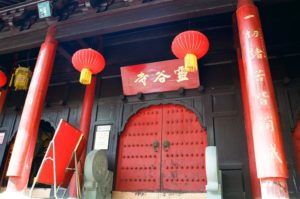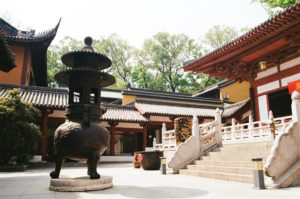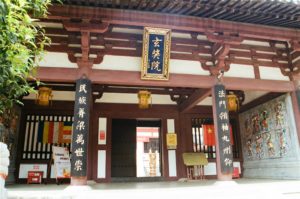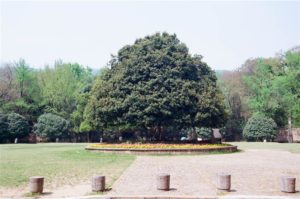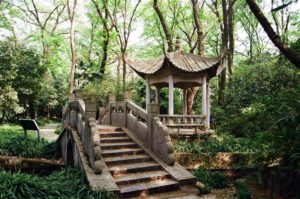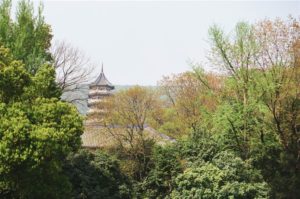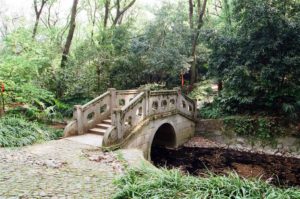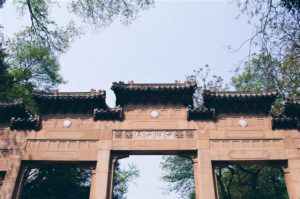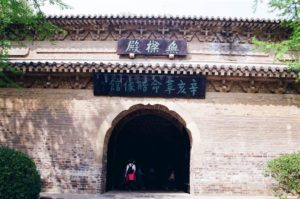Briefly, Nanjing – The Linggu Temple
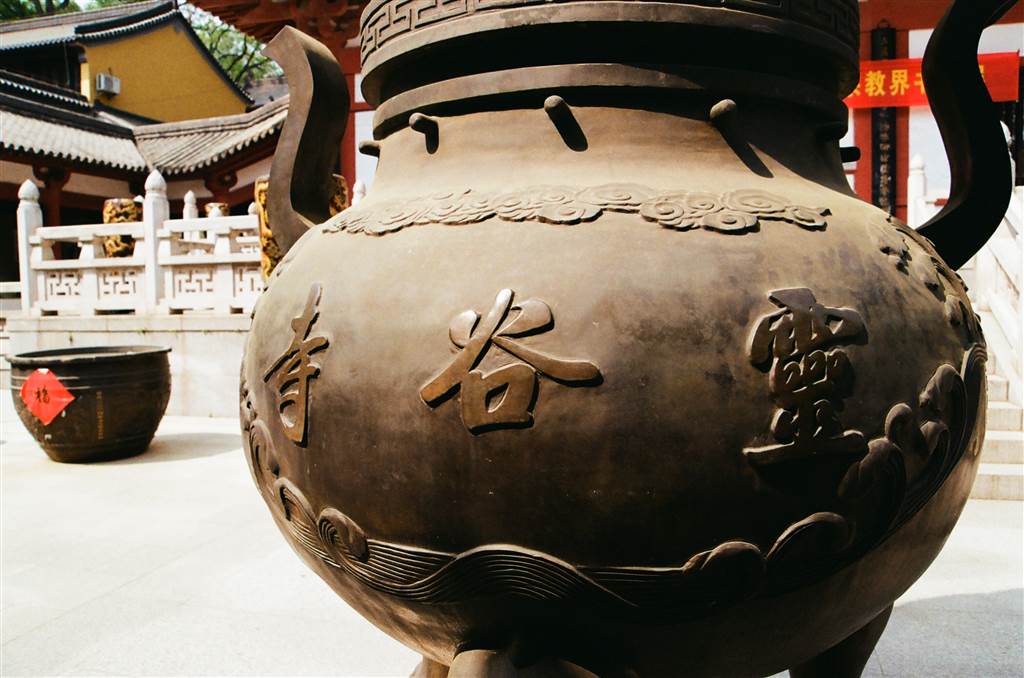
The afternoon heat was waning. I debated whether to see just one more site in the Zhongshan National Park before heading back to the hotel. I felt like I have seen what I wanted to see in terms of history. Yet I told myself to get my money’s worth. I then decided to head over to the Linggu (Spirit Valley) area.
In terms of historical significance, the Linggu Pagoda was a 20th century structure. It housed the memorial for the National Revolutionary Army that died in the Northern Expedition of 1926-1927. The Wu Liang Dian (Beamless Hall) itself was an architectural wonder. Made with just bricks, with no nails and no wooden beam, throughout its structure, it once belonged to a group of ancient Buddhist temples in the area. It now serves as a memorial to the Nationalist Army officers. The Buddhist Temple (Linggu Si) is still a functional temple with resident monks today.
I will keep this entry short as I was very tired when I toured this area. Perhaps the pictures will better convey the beautiful environment in the Spirit Valley area. It does have a long history of its own, spanning from the Buddhist Temple’s historic presence since the 6th century to the Nationalist Republican period.
Finally, I will note that there is a restaurant serving vegetarian cuisine outside the Linggu Temple. When I saw that, I regretted having eaten some standard street food just prior to coming here. The vegetarian noodles looked really good.
As I headed back to the hotel on the local bus, I finally noticed that the thoroughfares of Nanjing were lined with rows and rows of beautiful Chinese parasols.
Works Cited:
Eric N Danielson, Nanjing and the Lower Yangzi, The Definitive Travel Guide at 137-139.

